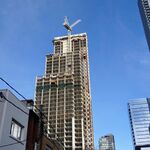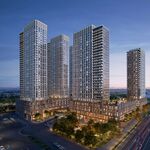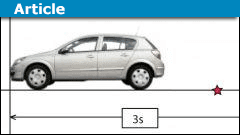You are familiar with the idea of induced demand, right? We're not reducing supply. That would be reducing lanes, etc. We keep the same number of lanes. In fact, highways that have low speeds have lower capacity than the same exact highway flowing at higher speeds. Tolling highways such that they can be free-flowing (80 kph+) actually creates highway capacity that is lost when they are instead operating at 20-30kph. A 10-20%
increase in highway capacity.
View attachment 311001
As in all physics problems, let us start by defining our problem set. We will start by assuming that our road is a simple lane (no room for passing).

www.physicsforums.com
With tolls, we are allocating supply to the most productive use (as evidenced by willingness to pay). There are alternatives to existing trips with free highways without putting in subways, too. One is carpooling. Or express/GO buses. The alternative is a tragedy of the commons we see that results in gridlock.
Yes it does. This is fundamental economics. Higher prices = lower demand*.
*Except Veblen goods.
Right now road capacity on highways is "free" to drivers. Whenever something is "free", people use it excessively.
By charging to access the highway, fewer people will take it, but it will move faster (saving them time.) People who used to have no choice but to "pay" for the highway trip with time now have the option to pay money to save time. Middle class people are happy to make this trade-off. People who can't afford it either shift their journeys to other hours when the highway is less busy and the toll is cheaper, or they will shift to arterial roads (which do have extra capacity.) Either way, some demand for peak-period driving on the highway will disappear.
Whenever there is a short supply of something, economics tells us that pricing is the appropriate way to manage demand for that scarce good.
I think you make an interesting point, though. Highways are for personal vehicles, arteries are for transit. So as transit advocates we should want the highways clogged rather than traffic diverted to local roads that buses use. I guess that's where the tolling revenue being dedicated to transit comes in, though. Transit should be better off with the extra capital funding than it is worse off from the diverted traffic. And it's unlikely that all of the traffic goes to local roads, mostly it would be diverted to other times of day or eliminated through cancelled trips/carpooling.
These arguments really sound like a case of the "perfect being the enemy of the good", and:
- ignore induced demand
- ignore the fact that pricing something can change demand
Right now driving on roads is 'free'. We can talk about insurance, vehicle costs, etc. but for most drivers they are sunk costs - and as a result, there is very little signal to force them to change their behavior. Congestion and parking fees change behavior because they're both tied
immediately to the act in question. Tolling would have the same effect.
Except that's not how Induced Demand works. Commuters aren't sims that magically appear out of nowhere to use highways if its available. Induced Demand is a result of people moving into a new location to use the new highway, or sprawl, its not this magic spell that makes new highways at capacity at day 1. Now let's say we go with your plan and make these highways tolled. Where do these commuters go? I'll tell you where they go, they clog up nearby streets. If you want proof of this, drive down the 407 during Rush hour, and look to the right (or left) and see what's happening on Highway 7. When people don't have access to a highway, they just use the next best thing. Now you might say "Transit", but... well... that's what this discussion is all about isn't it? If you want a more concrete example, imagine you live in Markham, and every day you have to drive to midtown Toronto to go to work. One day the province announces all highways are now tolled, deal with it. What are your options now? If money is tight, you can drive on side roads which are now even slower, or you can take transit which will increase your total commute time, both options significantly decrease worker productivity on a major scale which significantly effects the economy in a negative way. Let me ask you this, who does this benefit? Yes the highways are less congested, but that's because the only people who are using them are rich people who have no issue paying up, meanwhile those in more economically vulnerable positions are forced to take significantly worse commutes that decrease, and for what? Because you don't like people having free infrastructure, yes we subsidize people using cars, and maybe an argument could be made about whether or not that's the right things to do, but this has been the status quo for a long time and suddenly changing that could have serious consequences and put people in problematic positions. This is why I harp on the point of offering proper alternatives if we are to remove these options. When we deal with people's livelihoods, extra care has to be used when dealing with these issues. If you look at something small like RapidTO, look at how large the outrage was when the TTC removed some of the bus stops to make bus journeys faster on an extremely small scale, and how the TTC had to quickly reverse and reinstate a bunch of them a week after it was launched because people were negatively affected by the change.
Seems kinda dumb to start. Saying you take the mode that's quickest as possible, but also most efficient as possible. These are two entirely diff metrics. And little mention of cost, particularly when talking about leaving a car downtown. Or comfort...significant numbers in the city make the choice to not drive despite time savings offered.
Then your argument that LRT isn't effective for the suburbs? I get arguing in favour of grade-separated rail, but to claim that LRT flat-out won't be effective is pretty clueless. Obviously things are a bit quieter up in Markham so you're not aware, but a significant amount of suburban corridors in Toronto are running extremely high transit volumes. You really think a proven solution has to be discarded in order to wait indefinitely for subways on these corridors? Who you speaking for? Get real.
1) When I say LRT, I'm specifically referring to at grade median LRT, and I do so because the context of LRT in this city is Transit City which for the most part was at grade median LRT. When I say "LRT", I don't refer to stuff like the C-Train and Edmonton LRT which are in their own dedicated ROW with boom gate priority, or the O-Train which is fully grade separated (although I classify that more as a light metro with a horrible vehicle choice), I'm specifically talking about stuff like Eglinton East and Finch West. Sorry if that raised any confusion.
Also still can't wrap my head around your claim that you're a supporter of elevated rail. SSE, EWLRT, YNSE, Sheppard. I read those threads. Where's that support in light of projects mostly or entirely deep tunnel? Nowhere. Seems like any "support" is specific to sections of OL, which is odd. Then the one line we have that is largely elevated and was to be beefed up/extended (Line 3)...oh right can't have that because it has a transfer. So...not really any support for elevated from you.
Then you clearly haven't read enough of my posts.
For Eglinton West, I have stated numerous times that my ideal project for the line is Elevated on the side of Eglinton Road, and that the subway is overpriced. The only reason why I support the tunneled option is because I prefer it over the old at-grade LRT option, a lesser of 2 evils you might say. If a politician came out and had a plan for an elevated alignment that could be quickly, instant vote (unless he turns out to be a horrible person or something, I'm not that shallow). For SSE, I also have stated numerous times that my "Ideal" Project would've been a refurbishment of the RT to Mark 2/Mark 3 trains, and the Eglinton Crosstown would instead be a western extension of the Scarborough RT, with the section between Science Center and Kennedy running on an elevated viaduct. If we aren't talking about ideals, and we're talking about what's on the table right now, I support SSE simply because I think it makes more sense than the Scarborough LRT for several reasons, and while I want to say that I support an elevated SSE, I'm not a civil engineer, so I'm less confident on the feasibility of that route, whether there is enough room for a portal, and what sacrifices would have to be made to run it elevated. However I'm almost certain that if that option was presented, I'd be an instant supporter. Yonge North is the same story as SSE, but even then, we have a new cost cutting route that runs on the rail corridor to save on station construction costs, and I 100% support it (even though the single bore option would have stacked tunnels with stacked stations which would be really cool).
P.S. Scarborough LRT isn't a "beefed up" Line 3, its a technological downgrade. Its Line 3 but with worse vehicle capacity, with worse internal vehicle circulation, and would require rebuilding every station to have low floor platforms (which are objectively worse than high floor ones in this context).






